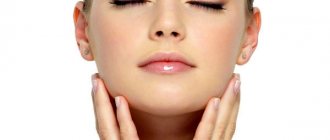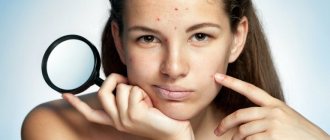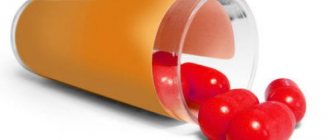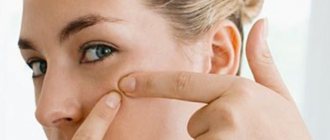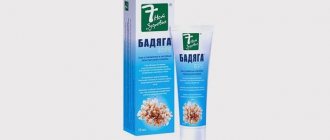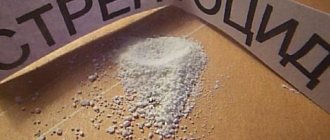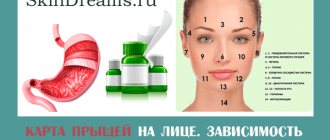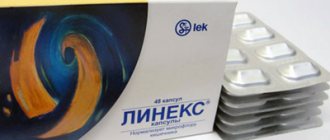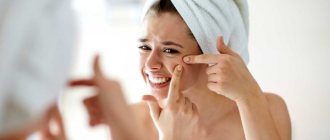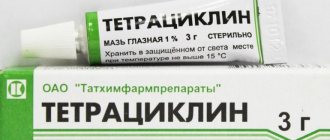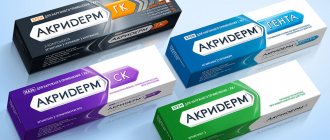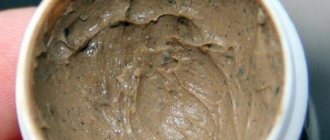Kinds
Acne is treated with pharmacological agents of natural (rare) or synthetic (much more often) origin. They help slow down or completely stop the activity of microbes.
According to the mechanism of action, doctors divide these drugs into two large groups:
- Bactericidal , which cause the death of microbes.
- Bacteriostatic , inhibiting the growth and reproduction of pathogenic microorganisms.
Only the doctor decides which antibiotic to choose for acne. In this case, several factors are taken into account - the patient’s age, acne severity, tendency to allergies, existing diseases and much more. The doctor will also help you choose the exact time to take the drug, choose the optimal period for treatment and the duration of the course.
You cannot stop taking antibiotics for facial acne on your own. Despite the fact that the rash has completely disappeared and the skin looks healthy, there is a high probability of a relapse of the disease. Therefore, you must strictly follow all the doctor’s recommendations and take the drug for the recommended time, without decreasing or increasing it.
All antibiotics for the treatment of acne can be divided into topical (local) and systemic (for oral administration). The list of drugs will be indicated in this article just below.
Possible side effects
Even the best antibiotics for acne have side effects. Therefore, their uncontrolled use should be avoided.
The most common side effects include:
- nausea to the point of vomiting;
- weakness and dizziness;
- ulcer of the esophagus and stomach;
- disruption of the normal functioning of the gastrointestinal tract;
- diarrhea and dysbacteriosis;
- increased sensitivity to bright light;
- dysfunction of the liver and kidneys.
It is important to consider that the effect of hormonal contraceptives may weaken.
Topical
Gels, creams, mash-ups, acne ointments with antibiotics are always applied only to the affected areas of the skin. It is these drugs that are usually classified as topical pharmacological agents.
The main advantages when choosing drugs for external use are the absence of systemic effects on the entire body. But treating acne with topical antibiotics also has a lot of disadvantages.
- After the last application of the product to the skin, a relapse of the disease may occur at the end of the course.
- Local skin immunity is reduced, since the active substance of the drug, and in our case it will be antibiotics, kills not only harmful, but also beneficial microorganisms.
- An allergic reaction may develop at the site of application - itching, redness, swelling, peeling.
Often, local antibiotics against acne are prescribed along with systemic antibacterial drugs.
But for mild acne, the doctor can prescribe them without the use of additional medications.
What antibiotics for acne for external use
Most often, topical antibiotic preparations have a bacteriostatic effect. The main dosage forms can be:
- Ointments.
- Gels.
- Lotions.
- Chatterboxes.
- Creams.
- Solutions.
It is recommended to apply them either to the entire affected area of the skin, if there are too many pimples or blackheads, or only specifically to the site of inflammation. The list of topical antibiotics for acne is quite long. But we have collected for you only modern and actually effective drugs.
Eriderm
This is a good antibiotic for acne in the form of a solution for external application. The drug contains erythromycin, which inhibits the growth and development of propionic bacteria. The main indication for use is juvenile acne, also called vulgar acne.
It is recommended to apply the product to previously cleansed facial skin using a cotton pad in the morning and evening, avoiding contact with the mucous membrane of the eyes or mouth.
Zerkalin
The anti-acne remedy with the antibiotic mirrorin contains clindamycin, which, once on the inflamed skin, begins to actively inhibit pathogenic microbes. Can be used independently as an anti-acne remedy, or simultaneously with the prescription of tablets.
It should be applied to areas of inflammation twice a day - morning and evening. Before application, clean the skin with a soft gel.
Usually it does not give any side effects; in rare cases, dryness and flaking may develop, which can be solved by using a moisturizer.
Klindovit
Antibiotic cream for acne on the face, clindovit, based on clindamycin, is a long-known and well-proven remedy. The duration of one course of use can be up to 3 – 5 months. It is often prescribed simultaneously with medications based on benzoyl peroxide.
ethnoscience
Traditional medicine recipes are no less effective in combating acne and pimples. However, you should consult a dermatologist before using them.
Masks
- Calendula mask. Mix a spoonful of herbal tincture and a spoonful of flour with half a glass of water and two spoons of fresh aloe juice. Apply to clean facial skin for ten minutes.
- Sage. Pour two tablespoons of dry herb into a glass of hot water, boil and leave for twenty minutes. Strain the broth and add a teaspoon of honey to it. Moisten gauze in the resulting preparation and apply it to the affected areas of the face.
- Aspirin and honey. Place two tablets of acetylsalicylic acid in a container and drop clean water on them to dissolve. After this, put a teaspoon of honey there and mix well. Apply the resulting mixture to your face for twenty minutes, then rinse with light rubbing movements. Recipes for other masks with acetylsalicylic acid can be found here.
Ointments
- Parsley ointment. Mix thirty grams of herb from glasses, bring the mixture to a boil and boil to half the amount, strain. Add four pieces of Vaseline to one part of the cooled broth. Apply once or twice a day. More recipes for parsley masks here.
- Zinc ointment and chloramphenicol. A mixture of pharmaceutical drugs can dry out acne and destroy pathogenic microbes. Crush two tablets of chloramphenicol and add them to a jar of zinc ointment, mix. Apply once or twice a day, lubricating the affected areas.
Lotions
- Chamomile decoction. Pour a liter of boiling water into two tablespoons of dry herb and leave the mixture for half an hour. You can also add calendula to it for greater effectiveness. Wash your face with the mixture twice a day.
- Infusion of raspberry leaves. Add a glass of boiling water to a tablespoon of herb and leave the mixture for half an hour. Suitable for preparing lotions and wiping the skin.
- Calendula. Grind dry or fresh inflorescences, mix with alcohol or vodka (for every two tablespoons of raw material, a quarter cup of liquid). Add a quarter glass of water, five milliliters of boric acid and three milliliters of glycerin. Wipe the affected areas with the composition two to three times a day.
- Cucumber. Peel and grate (or chop) two medium-sized cucumbers, add half a glass of vodka. Infuse the drug for two weeks on the windowsill. This lotion can be stored for a month and should be used twice a day.
Baths
Steam baths help in the treatment of acne as a means of opening clogged pores and saturating the skin with beneficial substances. To prepare the bath, you need to brew and boil hop cones in two to three liters of water, then remove the mixture from the heat and tilt your face over it. It is recommended to cover the top of the head with a towel or thick napkin. The procedure should be carried out for five to ten minutes twice a week. After this, it is recommended to lubricate your face with a moisturizer.
In the same way, chamomile, calendula, St. John's wort and other medicinal herbs can be used to prepare steam baths. For two to three liters of water, one glass of raw material is used. Find out the effect of steaming masks in the article.
Steam baths help expand pores, so this method of treatment should not be abused.
Effective antibiotics for acne combined action
An anti-acne cream, ointment or lotion with an antibiotic may also be a combination drug. That is, in addition to the antibacterial agent, it will also contain another substance that also helps in the fight against acne.
Zenerite
This is a popular acne lotion that contains not only the antibiotic erythromycin, but also zinc acetate. Therefore, in addition to the bacteriostatic effect, the drug also has a drying effect and is good at helping to cope with excessive sebum production.
Zinerit copes well with acne at the initial stage, as well as in the treatment of moderate acne.
In rare cases, after a full course of therapy, a relapse of the disease may develop after some time.
Benzamycin
What antibiotics are best for acne? Basically this is a drug such as erythromycin. It is this medicine that is contained in benzamycin gel. The second important component is benzoyl peroxide.
The gel has a pronounced antibacterial effect, helps cleanse the sebaceous glands and prevents the appearance of new comedones. Most often used in combination therapy for acne of the first and second severity.
Klenzit S
Acne antibiotic gel klenzit C is one of the most popular products. The drug contains clindamycin and adapalene, which belongs to the group of retinoids.
Together they suppress the development of bacterial microflora, normalize the process of keratinization and cleanse the epidermis. In addition to the therapeutic effect, the drug can also be used for prophylactic purposes to prevent the reappearance of acne, pimples and comedones, both open and closed.
Definition of disease
Acne (acne or pimples) is an inflammation in the area of the hair follicles resulting from an infectious infection of the subcutaneous secretion secreted by the sebaceous glands. Usually the problem appears against the background of excessive sebum secretion, insufficient hygiene of the facial skin, clogging of pores and ducts. The rash forms in the form of small tumors or pimples with purulent erupting contents.
In appearance, acne can be confused with other types of rashes. Therefore, independent diagnosis and self-medication is unacceptable.
Tablets and capsules
Systemic antibiotics are prescribed for oral administration. This is a large group of drugs that can be divided into several subgroups depending on what the active substance is.
- Penicillins – flemoxin solutab.
- Lincosamines – lincomycin, clindamycin.
- Tetracyclines – doxycycline, tetracycline, minolexin.
- Macrolides – erythromycin, vilprafen.
All medications on the list are highly bioavailable, accumulate well in the sebaceous glands and help quickly suppress the growth and reproduction of microbes and bacteria that cause acne.
Systemic antibiotics for acne are often prescribed with topical benzoyl peroxide products and also in combination with retinoids.
This makes it possible to increase the effectiveness of treatment, reduce its duration and prevent the development of addiction.
Tetracycline
Tetracycline is an antibiotic for facial acne , which is available in tablet form. This drug is highly soluble in fats, quickly accumulates in the sebaceous glands, and has excellent antimicrobial activity against propionic bacteria. They are the main provoking factors for the development of acne and pimples.
Tetracycline has excellent bioavailability and excellent efficacy. For acne, a dermatologist prescribes tetracycline in low doses for a period of 2 to 4 months. For acne, 0.1-0.15 grams per day is prescribed in divided doses. If the condition improves (usually after 3 weeks), the dose is gradually reduced to a maintenance dose of 0.125-1 g.
When treating acne with tetracycline, the patient may experience the following side effects:
- Dysbacteriosis or other disturbances in the functioning of the stomach (intestines), which can be manifested by nausea, vomiting, pain in the stomach, and upset stool.
- Dizziness.
- Impaired kidney function.
- Violation of the formation of bone tissue and teeth.
- Increased sensitivity to ultraviolet radiation, which is called photosensitivity.
If you use the antibiotic tetracycline against acne on your face, you must remember that it is not safe to take it in the summer.
Along with the disappeared ulcers, areas of increased pigmentation and a large number of freckles will appear on the face. Also, when taking tetracycline in the summer, you should not visit a solarium, go to the beach or go out in the sun.
Tetracycline for acne is contraindicated in pregnant women and children under 18 years of age. This is due to the fact that the drug has a negative effect on bone formation and dental development in the baby.
Doxycycline
If acne appears on the body, the antibiotic doxycycline is often used for treatment. This drug is also a tetracycline drug, so it is practically no different from the previous drug. But doxycycline causes side effects much less frequently and is better tolerated by the patient when prescribed in minimal doses for a long time.
The average course of doxycycline acne treatment for facial acne is up to 12 weeks. According to reviews, the drug quite quickly allows you to get rid of large purulent rashes, severe itching, and redness. It is recommended to take 200 mg of the drug per day. Most often, one tablet contains 100 mg, so the drug in the treatment of acne and acne is prescribed 2 times a day.
Among the main side effects are:
- Reduced effectiveness of oral contraceptives.
- Inhibition of hematopoiesis.
- Negative effect on liver function.
- Manifestations of dysbacteriosis and candidiasis.
Doxycycline is also contraindicated during pregnancy and in children under 8 years of age.
Erythromycin
You can treat acne with antibiotics using erythromycin. However, it should be remembered that this medicine gives a positive effect only in the case of the very first use.
With repeated treatment of acne with erythromycin, the body develops addiction and the antibiotic becomes useless in treating acne.
The drug is used orally in tablets or capsules for a long time. The dosage is determined by the doctor individually, but most often it is 1 gram of the drug per day, which is equal to 4 tablets of 250 mg.
The drug is contraindicated during pregnancy and lactation. You can treat acne with erythromycin at any age.
Clindamycin
Clindamycin is an antibiotic that is used orally for acne. For acne, the duration of treatment should not exceed 10 days. The dosage regimen is the standard dosage - 150 mg at intervals of 6 or 8 hours. In severe cases, it is possible to increase the dosage to 300 or 450 mg.
A topical drug must be prescribed, for example, ointment or cream with clindamycin.
Clindamycin is produced in Russia under different trade names, but the main drugs that contain this active substance should be considered:
- Dalatsin.
- Mirror.
- Clindatop.
- Clindacin.
- Clindacil.
- Klindes.
- Klindovit.
Antibiotics for acne on the back, face, shoulders, and other parts of the body, if it is clindamycin, cannot be used simultaneously with drugs such as erythromycin, vitamins, or those medications that contain calcium or magnesium.
Flemoxin Solutab
What other antibiotics for acne on the face can be used orally? Many doctors recommend using amoxicillin-based drugs in treatment. One such medicine is flemoxin solutab.
For adults or children over 10 years of age, a single dose can range from 250 to 500 mg. The drug is taken 3 times a day, the interval between doses should be 8 hours.
Flemoxin should not be used simultaneously with other antibacterial drugs - cephalosporins, vancomycin, rifampicin, tetracycline, sulfonamides.
With long-term use, complete insensitivity of Propionibacterium acnes to this type of drug may develop.
Preventive measures
Cold pimples on the face require the use of preventive measures to avoid further infection. Prevention can be used to avoid the inflammatory process.
It is worth adhering to certain rules:
- Avoid hypothermia.
- Avoid excessive port allocation.
- Use cosmetics to cleanse your skin.
- Eat right.
- Give up bad habits.
- Get a medical examination.
- Take care of your nervous system.
By avoiding frequent hypothermia, you can avoid the popular question: how to get rid of a cold pimple quickly and effectively. In cold weather, you need to protect your skin with a scarf and dress warmly. Do not overcool the damaged area of skin. Complications of the inflamed process may occur.
Exposure to cold air significantly dries out the skin, causing cupidosis and provoking inflammatory rashes. A weakened immune system accelerates the disease process.
Excessive sweating provokes an inflammatory process. Toxins that leave the body and remain on the body clog pores, forming blackheads and purulent inflammation. The presence of profuse sweating indicates a disease. Often characterized by diabetes mellitus. Having strong sweating and frequent appearance of purulent rashes, it is necessary to undergo examination. Diagnostics will show the presence of the disease. The problem will be solved using a different method.
You can get rid of it by using cosmetics to cleanse the skin. Don't use cheap products. It is necessary to use proven drugs. By buying cheap, low-quality cosmetics, you risk causing irritation of the epidermis. The treatment will be long and unpleasant.
Proper nutrition is the key to a healthy body and absence of diseases. Vitamins included in proper nutrition benefit the body. A healthy lifestyle helps you get rid of the disease faster. Food rich in vitamins helps speed up the process of eliminating inflammatory formation.
Giving up bad habits, even during treatment, will play a big role. Smoking and alcohol are negative factors that affect the condition of the skin. By giving up bad habits while the problem is being eliminated, you can speed up the healing process and improve your health.
The emerging formations, inflammatory in nature, require medical examination to avoid pathologies of various types. After undergoing an examination, a person can be sure of the treatment method and find out the true cause of the inflammatory formation.
By stopping wasting your nerves, you can notice a significant improvement in your health. After all, stress is often the cause of rashes. Calming the nervous system can speed up the healing process.
Sulfonamides
Although sulfonamides cannot be called antibiotics, drugs from this group work well against purulent acne. Medicines from this group belong to antimicrobial agents. Among the indications you can find not only infections of the ENT organs, pneumonia and cystitis, but also acne of varying severity.
The main drugs from this group are:
- Streptocide.
- Sulfadimezin.
- Sulfazin.
- Sulfargin.
- Dermazin.
- Arghedin.
- Argosulfan.
- Biseptol.
If you are looking for an antibiotic ointment for purulent acne, you can opt for a drug such as agrosulfan. This medicine has an excellent antibacterial effect for external use. The maximum duration of treatment is no more than 60 days. Apply the drug to the skin 2-3 times a day every day.
Advantages and disadvantages
One of the advantages of injections is the speed of penetration of the drug and effectiveness in treating acne.
The main advantage of antibiotic therapy is the ability to quickly achieve a positive therapeutic effect. The injection ensures that the concentration of medications in the blood reaches its maximum level in a short time. The pharmacy offers a wide range of products for oral or external use. A variety of medications allows you to choose an effective medicine, and if an allergy or adverse reaction occurs, replace the pharmaceutical with another.
The danger of prolonged and uncontrolled treatment with antibiotics is the increased load on the liver. Most medications in hepatocytes undergo chemical reactions or are filtered through the liver. During treatment, it is recommended to monitor transaminase levels. Antimicrobial drugs do not act selectively, which weakens the body's defenses. There is a risk of developing cross-allergy and resistance between groups.
Things to remember
It has been proven that acne goes away after antibiotics, but in order for the treatment to be as effective as possible, it is recommended to follow the following rules:
- What antibiotics should I take for acne? Only a dermatologist can answer this question. Self-medication may be dangerous or may not bring the desired result.
- Before you start taking a course of antibiotics for acne, you should carefully read the instructions for the chosen drug, familiarize yourself with the indications, contraindications, and side effects.
- Strong antibiotics for acne should be taken in a strict dosage, without exceeding or underestimating it.
- Acne can be cured with antibiotics only if the treatment period is followed. You should not interrupt the course of treatment after the number of acne begins to decrease. Treatment should be strictly under the supervision of a doctor.
- All antibiotics for acne must be taken under the protection of the stomach to restore the flora of the gastrointestinal tract. For this, Linex, bifiform, bifidumbacterin and other drugs from this group are used.
- Linex - produced in capsules, cost from 250 rubles ;
- Bifikol - available in the form of a dry powder for preparing a suspension, cost from 180 rubles ;
- Bifidumbacterin forte - available in capsule form, cost from 120 rubles ;
- Hilak forte - available in the form of drops for oral administration, cost from 240 rubles ;
- Enterol - used in powder form to prepare a suspension, cost from 220 rubles .
The use of antibiotics in the treatment of mild to moderate acne is a mandatory step in the treatment of all rashes on the face, back, shoulders and other parts of the body. Pimples can be not only subcutaneous, but also purulent.
Local and systemic antibiotics will be effective in treating acne in adults and adolescents only if the inflammation was caused only by microbes that are sensitive to antibiotic therapy. Otherwise, even a full course of treatment will not give the desired effect.
Therefore, not all acne needs to be treated with antibacterial drugs. The ideal option is to find the exact cause that caused their appearance and eliminate it.
Rash on the face and back
The appearance of rashes on the body is a common problem for many people. Inflammatory processes appear regularly. Some people suffer from a profuse rash, while others experience virtually no pain from the inflammatory process.
Inflammation occurs when the immune system is weakened. Neglect of hygiene rules and self-removal will lead to the spread of the infectious process. Complications that arise may leave scars. If the infection is severe, scarring may last a lifetime.
It is worth using external and internal treatment. You should not remove the formations yourself. Proper timely treatment will help eliminate the problem without causing negative consequences. Elimination of the problem must begin after consultation with a qualified specialist in order to prescribe the correct, effective treatment. Improper use of drugs provokes allergic inflammation and intoxication of the body.
